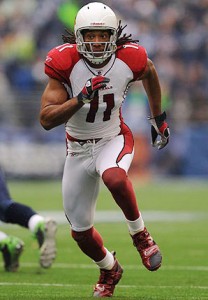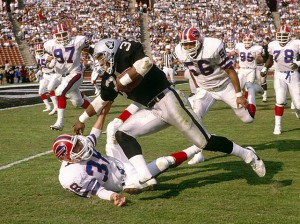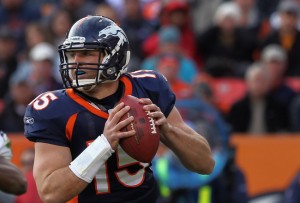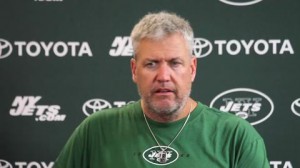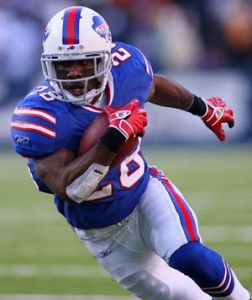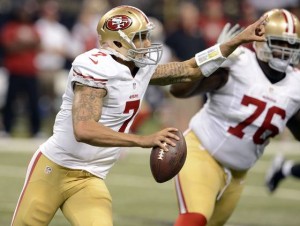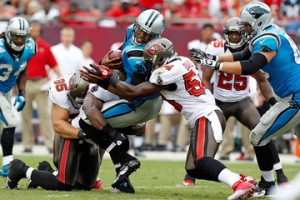
We need a playoff system to see more games between great teams like Alabama and LSU.
If Friday (or
sometimes Thursday) is
rant day at Football Perspective, then perhaps the first Tuesday in December can be fantasy day. Since everyone else does it, allow me to describe to you my preferred college playoff system.
- A modified 8-team playoff that’s actually a 10-team playoff with a four-team “play-in” round. A playoff system should not undermine the regular season, and my system places significant emphasis on success in the regular season: the most-accomplished teams get to clear the lowest hurdles due to byes, home-field, and weaker opponents.
- Notre Dame and the conference champions from the SEC, B12, P12, B10, and ACC earn automatic berths to the playoffs but only if they finish in the top 14.
- A selection committee (or a BCS-style ranking system) is used to select the remaining teams. There is a limit of 4 teams per conference. The “play-in” round and the first round of the playoffs are held at the higher seed’s location the week after the conference championship games (i.e., next weekend).
Therefore, Alabama (#2 in the BCS), Kansas State (#5), Stanford (#6), and Florida State (#12) would be guaranteed spots by virtue of being conference champions. Notre Dame (#1) is also guaranteed a slot.
That leaves five at-large selections:
— Florida (#3)
— Oregon (#4)
— two of Georgia (#7), LSU (#8), Texas A&M (#9), and South Carolina (#10)
— Oklahoma (#11)
Basically the only teams that could complain about this system are the leftover SEC teams, but I’m okay with that since they would be considered the 5th and 6th best teams from their conference. I suppose 12-1 MAC Champion Northern Illinois might be bothered, but they lost to Iowa and had a cupcake schedule. Had Nebraska defeated Wisconsin, or had Ohio State been eligible, Oklahoma or a 4th SEC team would have been left out.
For purposes of this post, I will say Georgia and A&M would be the committee’s picks.
Here’s how the playoff system would work. The three highest-ranked conference champions (Alabama, K-State, Stanford) get byes along with the next three highest-ranked teams — Notre Dame, Florida, and Oregon. The other four teams play at the site of the higher ranked team this Saturday (December 8th). So we would have:
Play-in round
#13 Florida State @ #7 Georgia
#11 Oklahoma @ #9 Texas A&M
— Had UGA beaten Alabama, the Bulldogs would have earned a bye followed by a home playoff game. By losing, they have to play a play-in game and then win a road playoff game. So the SEC Championship was a critical game — and there’s a good chance the committee would have simply selected LSU instead because of the loss.
— Had Florida State beaten Florida, they would have had likely received a bye and possibly a home playoff game. Now they have to win two road games. Of course, the ACC Championship Game, which no one cared about on Saturday night, would have been significantly more relevant.
— Ditto the Big 10 Championship Game, well, at least for the first half. Meanwhile, Oklahoma would have known they would have needed to run the table to get in after losing to Notre Dame. Instead of the season essentially being meaningless, think how much more exciting the Sooners last-second wins over West Virginia and Oklahoma State would have been?
— And of course, think how much more exciting the rest of the season for A&M and Johnny Manziel would have been if they had a chance to make the playoffs?
First round of the playoffs:
The three conference winners and the top-seeded at large receive home playoff games, which would be played on Saturday, December 15th:
#1 Notre Dame hosts the worst remaining seed (either FSU or the A&M/Oklahoma winner)
#2 Alabama hosts the 2nd worst seed remaining (Georgia or the A&M/Oklahoma winner).
#5 Kansas State hosts the 3rd worst seed remaining (Florida)
#6 Stanford hosts the 4th worst seed remaining (Oregon)
[Note: If you want to have the committee switch the bottom two games so that Stanford does not “have to beat Oregon again” I am fine with that. KSU-Oregon and Stanford-Florida are just as acceptable to me, and I am willing to do the same to avoid a UGA or A&M rematch with Alabama if events unfolded that way.]
Notre Dame and Alabama had the best two regular seasons, and look at their rewards: they get a bye, they get a home game, and they play a team coming off a play-in game.
KSU and Stanford both won their conferences, so they are rewarded with byes and home playoff games. Florida State won their conference but their lackluster regular season did not merit the same reward. Wisconsin won the Big 10 and got nothing. So the regular season remains vitally important. Oregon and Florida had great regular seasons, and thanks to a second bite at the apple (which is instead only reserved for Alabama this year), their seasons weren’t meaningless after one loss. And the lowest two seeds played their win into the playoff.
This playoff format makes the regular season much more meaningful for many more teams, while only slightly taking away from the value of certain games (admittedly, the Kansas State and Oregon upsets on November 17th would have been less meaningful in this format; I’m okay with that — the perfect should not be the enemy of the good.)
The Final Four
We now break until the first weekend of January. At this point, we have four very deserving teams. They would play in a four-team playoff, rotated among the bowl sites, as currently envisioned. We might see Notre Dame and Oregon in the Rose Bowl and Alabama and Kansas State in the Sugar Bowl. Or perhaps A&M and Oregon in the Cotton Bowl and Florida and Notre Dame in the Orange Bowl. Who knows. The good news is that unless there are 11 deserving teams, everyone gets a shot (and even if all 5 autobids finish in the top 14, 4 non-conference champs are still eligible; no worthy undefeated team should get left out in this system).

